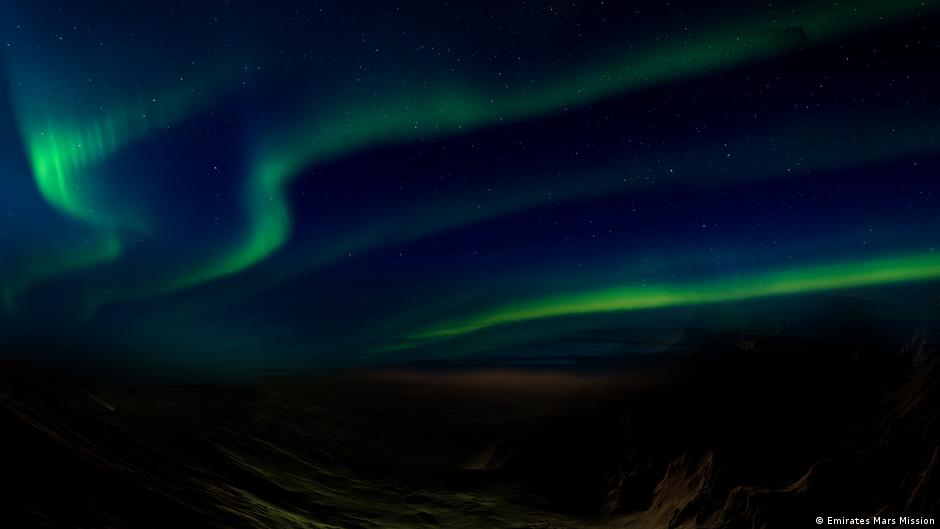The Emirates Mars mission reports the discovery by the Al-Amal probe of a worm-like aurora that stretches high in the Martian sky. It is also similar to our terrestrial northern lights, but there are a number of differences in the Martian. Scientists who discovered this atmospheric phenomenon say that this is something absolutely extraordinary, exciting and even shocking.

The aurora borealis was photographed by the Al-Amal probe of the Emirates Mars Mission (EMM). Shortly after Al-Amal entered Mars orbit, the spacecraft began to photograph auroras of the planet. The researchers decided to focus more on the so-called discrete auroras of the planet. During a year of observations, they managed to detect previously unseen worm-like auroras spreading almost all over the planet. In scientific terms, they are called the “Sinuous Discrete Aurora”.
Feature of the Auroras on Mars

Previously, scientists noticed three types of auroras on Mars. The first are diffuse auroras resulting from strong solar storms. The second is discrete auroras, which the probe has been exploring since the beginning of its mission. There is a third type — proton auroras, which are the product of the interaction of the solar wind of Mars and hydrogen in the exosphere of the planet — the outer layer of the atmosphere of Mars.
Discovered the Fourth Type of Auroras
Now a fourth type of aurora on Mars has been discovered on Mars — Sinuous Discrete Auroras. They consist of long worm-like emission bands of excited electrons in the upper atmosphere and extend for many thousands of kilometers from the day to the night side of Mars.
Observations of a stunning new type of Martian aurora by EMM’s Hope probe open up new areas for investigating Mars’ highly dynamic plasma environment. pic.twitter.com/VBn6FLRbtH
— Hope Mars Mission (@HopeMarsMission) April 27, 2022
Rob Lillis of the University of California at Berkeley says this is a shocking discovery. He is part of the team working with the Mars ultraviolet spectrometer probe “Al-Amal”.
What the Auroras Say About the Atmosphere of Mars
Images of auroras on Mars shed new light on the interaction of the atmosphere with the planet’s magnetic fields and the solar wind. The researchers want to provide data that will help the international scientific community create a global weather map for Mars, understand the planet’s weather cycles and track the movement of hydrogen and oxygen between different layers of the atmosphere.
Emirates Mars Mission
Emirates Mars is the first mission of its kind launched by an Arab country, and one of three sent to the Red Planet in 2020. The Al-Amal probe makes one orbit around Mars every 55 hours and collects a complete sample of planetary data every 9 days. Its mission is expected to last at least one more year.
According to Republicworld
Follow us on Twitter to get the most interesting space news in time
https://twitter.com/ust_magazine

